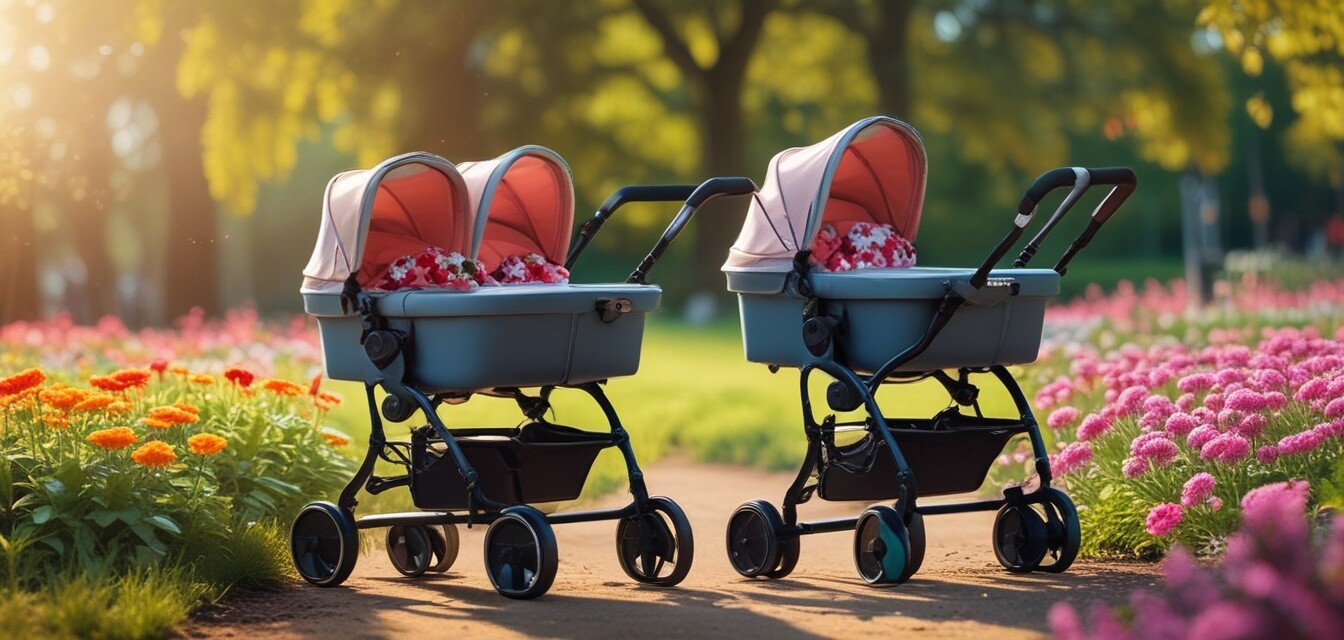
Strategies for sharing a stroller between siblings
Key Takeaways
- Assess the needs of each child before selecting a stroller.
- Consider strollers with adjustable features to accommodate growing children.
- Utilize accessories designed for sharing, such as cup holders and storage compartments.
- Teach children the importance of sharing and taking turns in the stroller.
- Plan outings to provide equal enjoyment and convenience for both siblings.
Sharing a stroller between siblings can be a practical solution for busy parents. It helps you manage the different needs of your children, whether they're toddlers or infants. The right strategies can make outings smoother, allowing for a memorable bonding experience among siblings. In this guide, we’ll explore effective methods for sharing a stroller and ensuring both children enjoy the journey.
Understand the different needs of each child
Before deciding on a stroller, take into account the different requirements of your children:
- Age difference: Consider their age gap; younger siblings might need more support.
- Size and weight: Ensure the stroller can accommodate both children comfortably.
- Comfort features: Look for adjustable seats and reclining options.
Choosing the right stroller
The type of stroller you select is crucial for sharing effectively. Here are some options:
| Stroller Type | Advantages | Disadvantages |
|---|---|---|
| Double strollers | Space for two children, easy maneuvering | Can be bulky, may not fit through all doorways |
| Convertible strollers | Flexible configurations, grows with your family | More complex setup, potentially higher cost |
| Side-by-side strollers | Equal view for both kids, easy to interact | Wider than traditional strollers, less storage space |
Key features to look for
When selecting a stroller for siblings, keep an eye out for these important features:
- Adjustable harness: Ensures safety for both children.
- Storage compartments: Keep items handy for both kids.
- Easy folding mechanism: Makes transportation convenient.
- Sunshade canopies: Protect kids from sun during outings.
Using accessories to enhance sharing
Stroller accessories can significantly improve the sharing experience. Consider the following:
- Cup holders: Keep drinks accessible to each child.
- Storage bins: Organize snacks and toys for easy access.
- Footmuffs: Keep each child cozy in colder weather.
Teaching siblings to share
It's essential to teach your children how to share their stroller space. Here are some methods to encourage cooperation:
- Establish turn-taking: Allow each child a chance to sit in the stroller.
- Play games: Turn sharing into a fun activity to promote teamwork.
- Reward sharing behavior: Praise children when they take turns or help each other.
Planning outings effectively
Successful outings require thoughtful planning. Here are some tips:
- Choose stroller-friendly locations: Parks or wide pathways are ideal.
- Timing matters: Plan walks during the children's optimal energy levels.
- Pack light but smart: Bring essentials to keep the outing enjoyable.
Conclusion
Sharing a stroller between siblings doesn’t have to be a daunting task. By understanding each child's needs and selecting the right stroller with thoughtful strategies, parents can create enjoyable and stress-free outings. Encourage sharing and interaction between siblings while utilizing stroller accessories to ensure a pleasant experience. For more parenting tips, check out our Parenting Tips category, and explore more about convertible strollers if you are considering upgrade options!
Pros
- Cost-effective for families with multiple children.
- Encourages sibling bonding and interaction.
- Convenient for short outings.
Cons
- Potential conflicts over space.
- Heavier to push compared to single strollers.
- May require extra planning for trips.